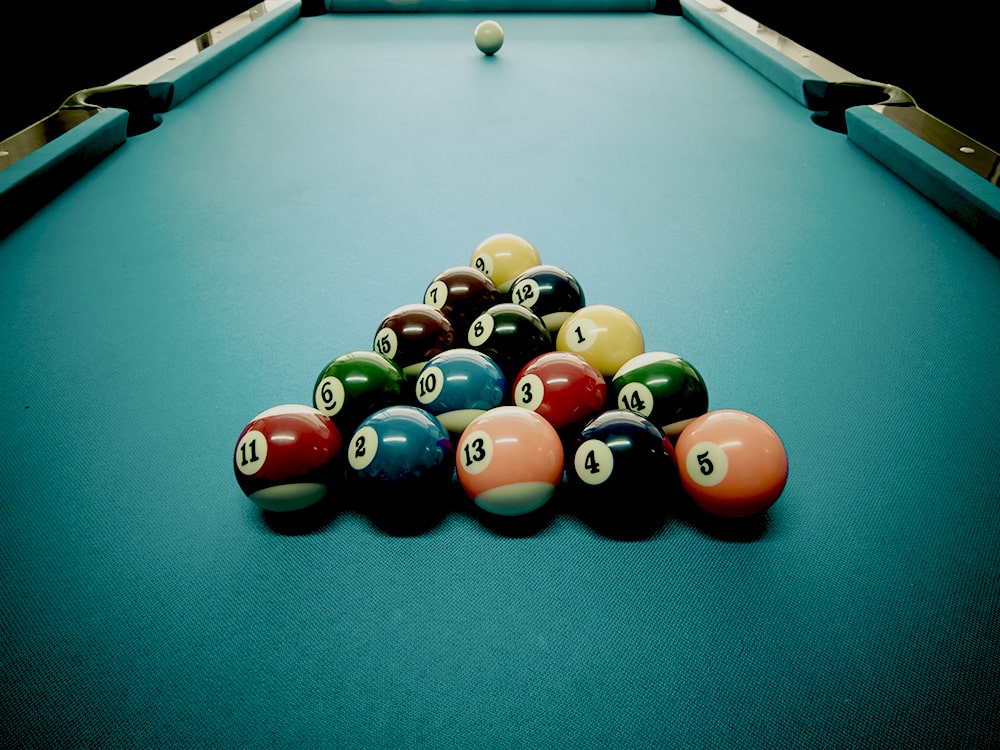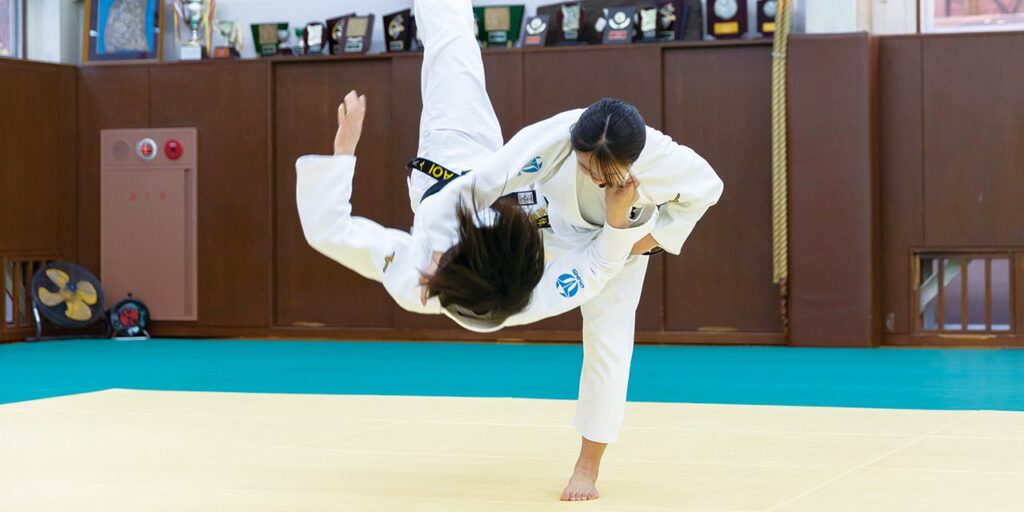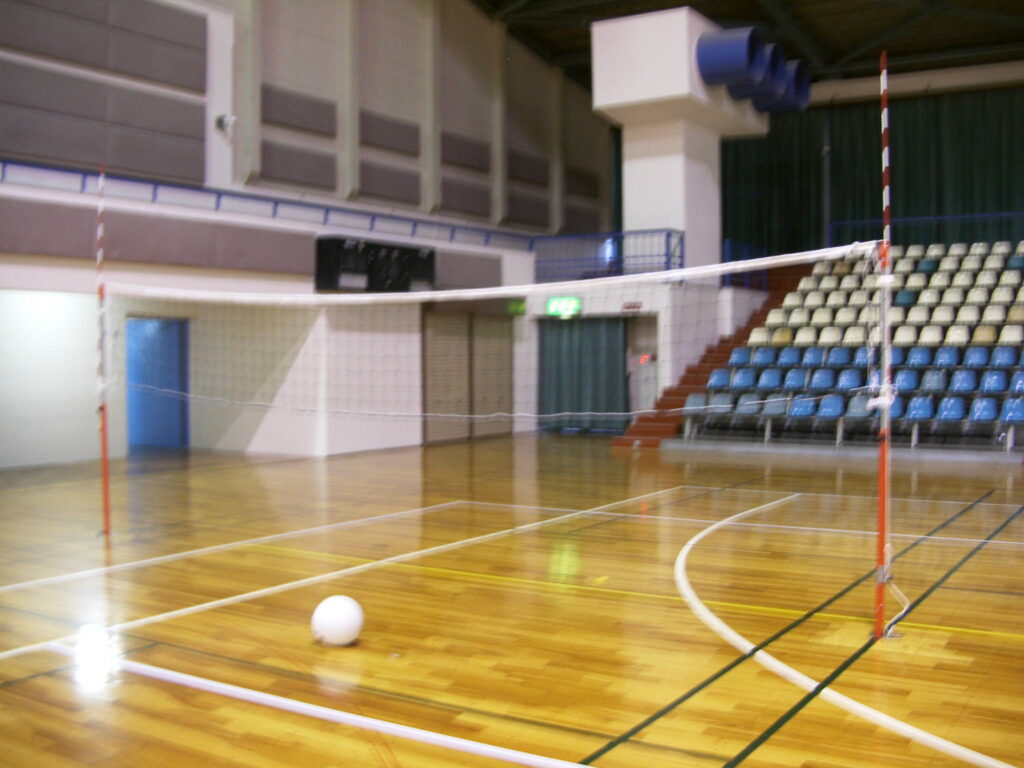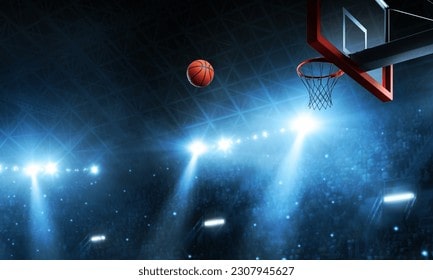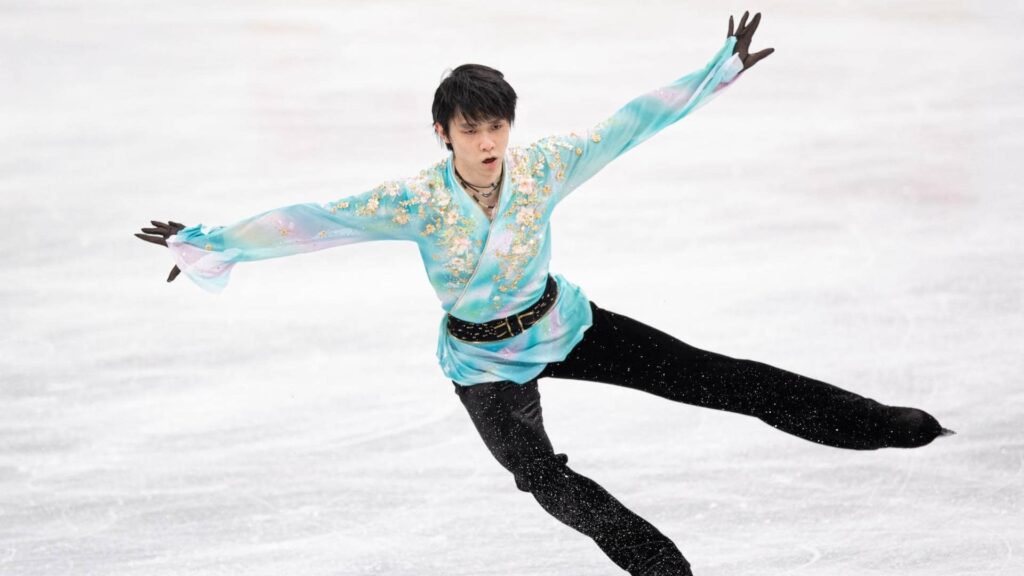
目次
- 1 figure skating glossary
- 1.1 ice dance
- 1.2 outside edge
- 1.3 accelerator jump
- 1.4 upright spin
- 1.5 Arabian
- 1.6 Inabaur
- 1.7 inside edge
- 1.8 edge
- 1.9 elements
- 1.10 over rotation
- 1.11 open stroke
- 1.12 original dance
- 1.13 original program
- 1.14 olympic figure skating competition
- 1.15 Insufficient rotation
- 1.16 counter turn
- 1.17 couple
- 1.18 kiss and cry
- 1.19 catch foot
- 1.20 camel spin
- 1.21 Quadruple (quadruple jump)
- 1.22 crossover
- 1.23 International Skating Union (ISU)
- 1.24 national championship
- 1.25 compulsory dance
- 1.26 combination
- 1.27 combination spin
- 1.28 salchow jump
- 1.29 zayak rules
- 1.30 sit spin
- 1.31 Senior
- 1.32 shoot the duck
- 1.33 short program
- 1.34 synchronized skating
- 1.35 New scoring system
- 1.36 Pivot foot
- 1.37 jump
- 1.38 jump combination
- 1.39 jump sequence
- 1.40 junior
- 1.41 women’s single
- 1.42 step out
- 1.43 step sequence
- 1.44 stroke
- 1.45 spiral step sequence
- 1.46 spin
- 1.47 spread eagle
- 1.48 three turns
- 1.49 slow jump
- 1.50 whole practice
- 1.51 World Synchronized Skating Championship
- 1.52 World Junior Figure Skating Championships
- 1.53 world figure skating championship
- 1.54 solder toil rule
- 1.55 turn
- 1.56 men’s single
- 1.57 cheat
- 1.58 choctaw turn
- 1.59 two foot
- 1.60 Twizzle
- 1.61 Tow
- 1.62 toe loop jump
- 1.63 back flip
- 1.64 personal best
- 1.65 punk
- 1.66 Bielmann spin
- 1.67 figure skating competition
- 1.68 flying spin
- 1.69 free skating
- 1.70 free dance
- 1.71 free leg
- 1.72 flip jump
- 1.73 fruts
- 1.74 bracket turn
- 1.75 blade
- 1.76 professional
- 1.77 pair
- 1.78 pop
- 1.79 Wrapped legs (Makiashi)
- 1.80 mirror skating
- 1.81 mohawk turn
- 1.82 unison
- 1.83 european figure skating championships
- 1.84 element
- 1.85 Four Continents Figure Skating Championships
- 1.86 lip
- 1.87 lift
- 1.88 loop jump
- 1.89 Lutz jump
- 1.90 layback spin
- 1.91 rocker turn
- 1.92 long program
- 1.93 World (World Championship)
- 1.94 waltz jump
- 2 AZ
- 3 At the end
figure skating glossary

Figure skating attracts many people due to its beauty, technical difficulty, and artistry.
It is a competition that combines not only beauty and grace but also technical difficulty.
Figure skaters work hard every day to perform better and win competitions.
This time, I have compiled a simple glossary of figure skating terms.
“What are some terms in figure skating?”
“Even when I watch figure skating on TV, I don’t understand what the commentary is saying.”
If so, please take a look at this figure skating glossary.
ice dance
Ice dancing is a type of figure skating in which pairs of men and women dance on ice to music.
Artistry, rhythm, and expressiveness are more important than technique, and lifts and jumps are limited.
The movements that are completely integrated with the music are beautiful, like a ballet on ice.
outside edge
The part of the skate blade that makes contact with the ice is divided into two parts: the inside edge and the outside edge.
Outside edge refers to skating using the outside of your foot.
The fact that the way you use your edges can make a big difference in your performance makes you realize the depth of figure skating.
accelerator jump
An axel jump is one of the jumps in figure skating, where you take off forward and make one and a half revolutions or more in the air.
It requires half a turn compared to other jumps, and is said to be more difficult.
Successful accelerator jumps seem to be a symbol of courage and skill, and are always moving.
upright spin
An upright spin is a spin in which the skater rotates in an upright position.
Variations range from basic standing poses to ones with arms outstretched and legs lifted.
A spin that is simple yet has a sense of speed and beauty, and is like magic on the ice.
Arabian
The Arabian is not a type of figure skating jump, but rather an acrobatic element seen in figure skating routines and ice shows.
The movement of jumping while making a half-turn forward attracts the attention of the audience, especially at shows and exhibitions.
Arabian’s spectacular jumping skills enhance the creativity and artistic appeal of figure skating.
Inabaur
Inabauer is a pose in which you bend your knees and arch your back while skating, and requires good posture and flexibility.
This move is named after German figure skater Christine Inabauer.
Inabauer has a breathtaking ability to capture moments of elegance and strength on the ice.
inside edge
Inside edge is when the skate blade makes contact with the ice using the inside of the foot.
It is the opposite of the outside edge and is a fundamental element of skating.
The inside edge glide creates the foundation for the skater’s stability and fluid movement, and is pleasing to watch.
edge
Edge refers to both sides of the skate blade: the inside edge and the outside edge.
Edge usage is at the heart of skating technique and influences every movement, including jumps, spins, and steps.
Edge control is a very delicate and important technique that determines the beauty and technical precision of figure skating.
elements
Elements are the components that are evaluated in a figure skating performance and include jumps, spins, step sequences, etc.
Each element is scored on technical difficulty and quality of execution.
The diversity of elements and the skaters’ ability to perform them at a high level greatly enhances the appeal of figure skating.
over rotation
Overrotation refers to rotating more than the required number of rotations when landing a jump.
This will be considered a technical error and will result in points being deducted.
Overrotation is also evidence that the skater has high rotational power, indicating the need for further refinement of control precision.
open stroke
The open stroke is one of the basic strokes that skaters use when starting a run in figure skating.
This is the technique of starting to slide by opening your legs and gaining propulsion, and is the basis of gliding.
The open stroke, which is one of the basics of skating, is proof of the invisible effort that makes it possible to start gracefully on the ice.
original dance
Original dance (OD) is one of the programs implemented in ice dance competitions until the 2009-2010 season, and is a dance created based on a specific rhythm or theme.
From the 2010-2011 season, it was replaced by the Short Dance (SD).
Original dance was an interesting competition that allowed us to see the creativity and expressiveness of the skaters.
original program
Original program (OP) is not a particularly modern figure skating terminology, as it may have been used in the past, but now includes terms such as short program (SP) and free program (FP) performed in singles and pairs competitions. is common.
In every era, there are programs that allow skaters to maximize their skills and expressiveness, and these are what make the sport so appealing.
olympic figure skating competition
Olympic figure skating competitions are part of the Winter Olympics program, and include men’s and women’s singles, pair skating, and ice dance categories.
The best skaters from around the world gather to compete on their skill and artistry.
At the Olympics, figure skating moves many people, and it is a truly special experience to see the moments filled with the dreams and hard work of the athletes.
Insufficient rotation
Underrotation refers to not meeting the required number of rotations during a jump.
For example, a triple jump requires 3 rotations, but if you land after 2.5 rotations, it will be judged as insufficient rotation. Points will be deducted.
Insufficient rotation is a technical issue, and one that skaters must overcome. The growth that occurs when a person successfully overcomes these challenges leaves a great impression on the viewer.
counter turn
A counterturn is a turn in which you switch edges by turning your body outward in relation to the direction you are gliding.
This movement is one of the essential elements for smooth and fluid skating.
The counterturn is a technique that shows a skater’s excellent edgework and sense of balance, and its fluidity is almost magical.
couple
Couple refers to a pair of a man and a woman in pair skating or ice dancing.
When the two perform together, they create a beauty and power that cannot be expressed alone.
You can see the beauty of trust and harmony in the couple’s performance, and the artistry created by their bond is truly moving.
kiss and cry
Kiss and Cry is the area where skaters wait for their scores after performing, and is known to be a place where feelings of joy and disappointment are expressed.
The reaction here is a moment that also touches on the humanity of the skater.
The kiss-and-cry moment leaves a strong impression on viewers, as it gives a glimpse of the effort and passion that goes into it under the pressure of competition.
catch foot
Catch foot refers to the action of sliding with one foot while grabbing the other foot with your hand during a spin or jump.
Especially when performing this trick with a spin, it is both visually beautiful and technically challenging.
The catch foot is a beautiful pose that shows the skater’s flexibility and technique at the same time, and every time I see it, I am amazed at its beauty and difficulty.
camel spin
A camel spin is a spin in which you stand on one leg, extend the other leg parallel to your body, and rotate while leaning forward.
This spin is known for its beautiful posture, which shows the skater’s sense of balance and flexibility.
The camel spin is a beautiful pose that combines elegance and strength on the ice, captivating viewers.
Quadruple (quadruple jump)
The quadruple jump is a jump that makes four revolutions in the air and is a symbol of technological advancement in figure skating.
It requires an extremely high level of skill and physical strength and is a key element of the men’s singles competition.
The quadruple jump is the result of courage and skill that challenges human limits, and its success is always breathtakingly beautiful.
crossover
A crossover is a skating technique in which the skater crosses one leg in front of the other in order to increase speed while making a curve.
This technique is essential for maintaining speed while skating.
Crossover is a basic skill that increases the fun and speed of skating, and its fluid movements are like dancing on ice.
International Skating Union (ISU)
The International Skating Union (ISU) is the organization that oversees the international competitions of figure skating, speed skating, and short track speed skating.
It establishes rules for figure skating and organizes international competitions.
The International Skating Federation plays an important role in supporting the development of the sport of skating and the implementation of fair competition, and its efforts increase the international appeal of the sport.
national championship
The National Championships are the pinnacle of figure skating competitions held in each country, where the top skaters in the country compete to be crowned the national champion of the year.
This competition can also be an important selection event for the right to participate in the Olympics or World Championships.
The national championships are a place where young talent shines and future stars are born, and the heated competition is one of the most anticipated events of the year for skating fans.
compulsory dance
Compulsory dancing is a former part of ice dancing competitions in which all competitors perform the same dance pattern and compete for accuracy and skill.
This was to evaluate the basic steps and rhythms of ice dancing.
Compulsory dancing is a competition that teaches the basic techniques of ice dancing and the importance of a sense of rhythm, and it was interesting to see the subtle technical differences between the dancers.
combination
A combination is a sequence of jumps or spins in figure skating.
In the case of jumping, high skill and continuity are required by moving on to the next jump immediately after landing.
Combinations test a skater’s technical ability and mental concentration at the same time, and the exhilaration of success is felt by the viewers.
combination spin
A combination spin is performing multiple spins in different positions or with different feet as one continuous movement.
This spin requires the skater to show variation and persistence.
Combination spins are a fascinating element that allows us to see the flexibility, balance, and creativity of skaters, and their complexity and beauty never cease to amaze me.
salchow jump
A Salchow jump is a jump where you take off backwards, rotate in the air, and land on the same foot.
This jump is one of the four basic jumps in figure skating, and its name comes from its inventor Ulrich Salchow.
The smooth take-off and landing of a Salchow jump shows the skater’s high level of technical ability, and just watching it makes your heart skip a beat.
zayak rules
The Zajac rule is a rule in competitive figure skating that if the same jump is performed more than once in a program, the combination must be different from the second time onwards.
This rule is in place to encourage diversity and creativity in technology.
Zayak rules give skaters the opportunity to show off a variety of skills and add tension and strategy to the program.
sit spin
A sit spin is a spin where you spin with one leg while stretching the other leg out in front of you, bending your knees and assuming a sitting position.
This spin tests a skater’s sense of balance and leg strength.
Sit spins are attractive for their stable, low stance and speed, and give a sense of the skater’s high level of physical strength and technique.
Senior
Senior is one of the categories in figure skating based on age and level, and generally refers to the highest level of competition.
Senior-level athletes are top-class skaters who compete in international competitions and the Olympics.
Senior category competitions are an opportunity to see the true essence of figure skating, and I am always impressed by their skill and beauty.
shoot the duck
Shoot the Duck (or Spread Eagle) is a movement in which you open your legs back and forth and use the edges of your legs to glide.
This pose requires flexibility and balance from the skater and is a very visually impressive element.
Shoot the Duck is a beautiful technique that shows the skater’s grace and strength at the same time, and can be considered art on the ice.
short program
A short program is a part of competitive figure skating in which athletes perform required elements (jumps, spins, step sequences) within a short program.
This stage requires a high level of skill and expressiveness, and greatly affects the overall performance in the competition.
The short program is a tense spectacle where the skaters’ precise technique and artistry are expressed in a condensed form.
synchronized skating
Synchronized skating is a team sport in which many skaters perform in unison.
A sense of unity, accurate formation, and sense of rhythm are important, and teamwork is the key to evaluation.
Synchronized skating fascinates viewers with its beautiful harmony and sense of unity that transcend individual techniques.
New scoring system
The new scoring system (International Judging System, IJS) replaces the previous 6.0 system and aims to provide fairer and more detailed evaluations.
It is possible to evaluate by dividing into technical points (TES) and composition points (PCS), and to give more detailed scores for each element.
The new scoring system makes figure skating scoring more transparent and easier to understand, increasing the fairness of the competition.
Pivot foot
The pivot foot refers to the foot that primarily supports your weight when jumping or spinning.
The stability of the pivot foot is directly linked to the success of the technique, and controlling it is one of the basic skills of a skater.
The quality of performance can be greatly affected by how you use your pivot foot, which shows the importance of this technique and the severity of skaters’ training.
jump
Jumping is one of the most spectacular techniques in figure skating, and it mainly involves spinning in the air.
There are various types such as toe loops, Salchows, Lutzes, and flips, and they are evaluated for their technical difficulty and beauty.
Jumps are a symbol of the excitement and beauty of figure skating, and a perfect jump is always a mesmerizing moment.
jump combination
A jump combination is the execution of two or more jumps in succession without landing.
This is an element that requires high skill and physical strength in figure skating, and greatly affects the difficulty of the performance and the score.
Jump combinations are the moment when a skater’s courage and practice results are tested, and the excitement when they succeed is exceptional.
jump sequence
A jump sequence is a combination of two or more jumps with steps or other movements in between.
Although there is less continuity compared to combinations, it shows technical diversity and expressive power.
Jump sequences are an interesting element that shows a skater’s creativity and technical range, providing a rich variety to a program.
junior
Junior is a category based on age and experience in figure skating, and is the next level after senior.
This is a stage where young talents compete and grow while gaining experience in international competitions.
Competition in the junior category is a place where future stars can develop their talents, and their growth and passion are very inspiring.
women’s single
Women’s singles is a competitive category in figure skating in which female skaters perform individually.
Programs that combine technique and artistry are required and include elements such as jumps, spins, and steps.
The women’s singles competition is a moment when a skater’s individuality and technique shine, and I am always impressed by their beauty and strength.
step out
Stepping out refers to losing your balance and taking an extra step after landing a jump.
This will disrupt the flow of the performance and will result in points being deducted from the scoring.
Stepping out is a small stumbling block in the process of a skater aiming for high skill, and overcoming it leads to their growth.
step sequence
A step sequence is a series of complex foot movements and turns performed in figure skating.
Skaters demonstrate their sense of rhythm and technique while skating to the music.
Step sequences are the most expressive parts of a program, and are the moments when a skater’s individuality shines the most.
stroke
A stroke is the basic movement in skating that a skater uses to gain momentum to slide across the ice.
You can increase your speed by skating by alternating your legs.
The smoothness of the stroke indicates the quality of the skater’s basic technique, and its beauty, although simple, captivates the viewer.
spiral step sequence
The spiral step sequence is a step sequence that involves sliding on one leg while lifting the other leg high to stretch the body.
This movement is especially seen in women’s singles and shows grace and flexibility.
The spiral step sequence is a beautiful element that captivates viewers by showcasing the skater’s grace and technical ability at the same time.
spin
A spin is a movement in figure skating that rotates at high speed while remaining in one place.
There are many different types and variations, such as upright spin, sit spin, and camel spin.
Many of the spins require incredible rotational speed and balance, giving a sense of the skater’s high level of concentration and skill.
spread eagle
Spread eagle is a technique in which a skater skates with his feet wide apart from side to side instead of back and forth.
This movement requires great balance and flexibility with edge control.
The spread eagle is a pose that showcases the skater’s excellent sense of balance and edgework, and is like art on ice.
three turns
A three-turn is a basic skating technique that involves using the edge of the skate to change direction while forming a “3” shape on the ice.
This technique is essential for changing direction while gliding and composing complex step sequences.
Learning the three-turn is a major milestone for skaters, greatly expanding their freedom and expression on the ice.
slow jump
A throw jump is a technique in pair skating where one partner (usually the man) throws the other partner (the woman) into the air, and the woman performs the jump and lands.
This technique shows the coordination and strength of the pair and is one of the highlights of the performance.
Slow jumps bring out the charm of pair skating to the fullest, captivating the audience with its power and beauty.
whole practice
General practice is the official practice held before the competition, in which all participating skaters use the course to check their performance.
This time is a valuable opportunity to get a feel for the ice on the field and watch other athletes perform.
General practice is an important stage to relieve tension and make final adjustments before the competition, and tests the athletes’ concentration.
World Synchronized Skating Championship
The World Synchronized Skating Championship is the pinnacle international competition in synchronized skating.
Top teams from all over the world gather to compete in team coordination, technique, and expressiveness.
The World Synchronized Skating Championships is a stage that showcases the beauty and precision of teamwork, and the sense of unity and gaiety is overwhelming.
World Junior Figure Skating Championships
The World Junior Figure Skating Championship is an international competition in which junior-level athletes compete to become the best in the world.
It is an opportunity for future star athletes to shine on the international stage, and their high level of technique and expressiveness will be put to the test.
The World Junior Figure Skating Championships gives us a sense of the future of the sport, full of young talent, and their passion and growth is very encouraging.
world figure skating championship
The World Figure Skating Championships is one of the most prestigious annual international competitions in figure skating, bringing together top skaters from around the world to compete for the title of world champion in the men’s and women’s singles, pairs, and ice dance categories.
This competition has a very high technical level and occupies an important place in a skater’s career.
The World Figure Skating Championships is a place where the dreams and passions of skaters come together, and it is the pinnacle of competition where their heroic efforts and artistry shine.
solder toil rule
The Soldatois rule is one of the rules regarding jumps in figure skating, which states that if an athlete performs the same jump multiple times in a program, at least one must be performed in combination or sequence with a different jump. It is determined.
This rule was created to encourage diversity and creativity in the program.
Soldatoir rules increase the appeal of the competition by giving skaters the opportunity to show off a variety of techniques and avoiding a series of monotonous jumps.
turn
In figure skating, a turn is one of the basic movements by which a skater changes direction on the ice.
This involves shifting your weight and changing your edges. Turns are an important element that shows the precision of technique and the beauty of flow, and greatly influence the overall impression of the program.
The beauty of turns is one of the charms of figure skating, and is an essential element in improving a skater’s technical level and artistry.
men’s single
Men’s singles is one of the four main competitive categories in figure skating, performed by individual male skaters.
Jumps, spins, steps and other elements will be showcased through a program that combines technique and artistry.
Men’s singles is known for its highly difficult jumps and expressive performances, and is a category that continues to captivate audiences.
cheat
In figure skating, cheating refers to incomplete rotation of a jump.
If you don’t have enough rotation when landing a jump, it will be marked as “cheated” and will affect your scoring.
Cheated jumps lack technical precision, forcing skaters to practice hard for perfect rotations.
choctaw turn
A Choctaw turn is a type of turn on ice that involves a change of edge and is performed on one leg.
This turn shifts your weight from the inside edge to the outside edge and vice versa.
The smoothness of a Choctaw turn is a good indicator of a skater’s edge control and shows technical sophistication.
two foot
Two-footed refers to when both feet are touching the ice.
This term is often used when both feet touch the ice at the same time when landing a jump.
A two-foot landing is sometimes considered a technical error, and skaters should aim to land on one foot.
Twizzle
A twizzle is a spinning motion with one toe on the ice.
It is found in spins and step sequences, adding an element of technical difficulty and artistry.
The twizzle is a movement that symbolizes the fusion of glamor and technique in figure skating, and it captivates the audience.
Tow
In figure skating, “toe” refers to the protrusion at the tip of the skate.
This part can be thrust into the ice to gain propulsion or used as a run-up during jumps.
It plays an especially important role in jumps such as toe loops, flips, and lutzes.
The technique of mastering the toe is directly connected to the success of the jump. Precise use of the toe not only shows the skater’s high level of technical ability, but also allows for spectacular jumps.
toe loop jump
The toe loop jump is one of the jumping techniques in figure skating, in which the toe (the tip of the skate) is pushed into the ice to initiate a rotation.
This jump typically takes off on the toe of the right foot and, after a rotation in the air, lands on the same foot (the right foot).
The toe loop is a jump that requires technical precision and rotational speed, and there are various difficulty levels, from single to quadruple (quadruple rotation).
The toe loop jump is one of the basic jumps in figure skating, and its perfect execution is also a great attraction for spectators.
The fluid rotations that skaters perform in the air symbolize the dynamic beauty of figure skating.
back flip
A backflip is a type of jump in figure skating that is not allowed in official competitions.
This movement involves the skater doing somersaults backwards, and requires an extremely high level of physical strength and technique.
Backflips are often performed at shows and exhibitions, and can be subject to penalties under competition rules.
The backflip is a special technique that captivates the audience with its power and beauty, but it is a bit of a shame that it cannot be seen in competitions.
However, I understand that rules are set from a safety perspective.
personal best
A personal best is the highest score a skater has achieved during his career.
This score is determined by the sum of technical factors and Performance Component Points (PCS) and is the basis for comparing skaters’ performance from competition to competition.
For skaters, setting a personal best is a big goal, and achieving it is a testament to their growth and hard work.
As a spectator, it’s thrilling to witness the skaters breaking their personal bests.
punk
In figure skating, a “punk” refers to a skater making a major mistake during a performance.
For example, a failed jump or a fall falls under this category.
Punctures have a huge impact on scores and are a huge mental challenge for skaters, especially when performing in stressful competitions.
Punctures can happen to anyone, and the strength of skaters to overcome them is one of the appeals of figure skating.
Bielmann spin
A Biellmann spin is a spin performed by spinning on one leg while lifting the other leg high above the head.
This spin requires a lot of flexibility and is often performed especially by female skaters.
The Bielmann spin is visually very impressive and is often used as the climax of a performance.
The Biellmann spin is a technique that symbolizes both the beauty of figure skating and the ability of an athlete, and seeing a skater perform it perfectly is a sight to behold.
figure skating competition
Figure skating competitions are a place for skaters to showcase their skills and artistry and receive rigorous scoring from judges.
These competitions span local, national, and international levels, with major events such as the Olympic Games and World Championships being of particular interest.
Competition is divided into four main categories: men’s singles, women’s singles, pair skating, and ice dancing.
Figure skating competitions are a place where skaters showcase their years of practice and dedication, and the tension and excitement is an unforgettable experience for those watching.
flying spin
A flying spin is a type of spin that includes a jump, in which the skater jumps into the air and then begins the spin.
This spin is both technically challenging and visually very appealing. Flying spins are scored on many factors, including entry, speed, posture, and smoothness of exit.
Flying spins are one of the most thrilling elements of figure skating, and are a great display of a skater’s athleticism and skill.
free skating
Free skating is a part of competitive figure skating in which skaters perform freely in a composition set to music.
It requires complex routines that include technical jumps, spins, and step sequences, with a strong emphasis on artistry and expressiveness.
Free skating is the soul of figure skating, and the performance, which perfectly combines the skater’s technique, individuality, and music, always captivates the audience.
free dance
Free dance is a program in ice dance competitions in which couples perform freely in accordance with music.
In this category, emphasis is placed on the expressiveness, sense of rhythm, and mutual harmony of the dance, as well as the technical aspects.
Free dance is a program where you can fully experience the real thrill of ice dancing, and the deep bonds between skaters and beautiful movements captivate the audience.
free leg
In figure skating, the free leg refers to the leg that is not touching the ice during the performance.
It plays an important role in maintaining balance and creating a beautiful posture during jump take-offs, landings, spins, and step sequences.
The position and movement of the free leg greatly affect the beauty of the performance and the accuracy of the technique.
The free leg is an important element that makes a figure skating performance look classy, and it is where the skater’s sense of balance and expressiveness are showcased.
flip jump
A flip jump is one of the basic jumps in figure skating, and is a jump that begins with a takeoff using the toe on the ice.
This jump primarily takes off with the toe of the right foot, and after multiple rotations in the air, lands on the same foot.
Flip jumps are often the highlight of performances due to their difficulty and beauty of execution.
The flip jump is one of the most difficult tricks in figure skating, and the exhilarating feeling of success when it’s successful is a charm that can be felt by viewers.
fruts
Regarding the Lutz jump, Fultz takes off with his pivot foot on the inside edge.
bracket turn
Bracket turns are a type of edgework in figure skating, and are so named because the movement of the feet on the ice resembles the shape of the letter “ku”.
This turn is a highly technical move in which the skater changes the edge from the inside edge to the outside edge, or vice versa, while skating across the ice with one foot.
Bracket turns are one of the most iconic elements of figure skating’s technical beauty, and their smooth execution is very appealing to viewers.
blade
A figure skate blade is a metal blade attached to the bottom of the skate.
This blade has a special design that allows it to perform movements such as gliding, turning, and jumping.
The shape of the blade greatly influences a skater’s performance, including edge sharpness, curve, and pick placement.
Skate blades play a very important role in the technical aspects of figure skating. Proper blade selection and maintenance is essential for skaters to perform at their best.
professional
In figure skating, “professional” refers to athletes and instructors who go beyond amateur status and make skating their profession.
Professional skaters compete in shows, exhibitions, and professional competitions, and may work in fields such as skating education and choreography.
By continuing to pursue their skills and artistry in the world of figure skating, professional skaters play an important role in spreading the beauty and appeal of the sport.
pair
Pairs in figure skating is a competitive category in which a pair of male and female skaters perform together.
Pair skating features complex, coordinated routines that include unique elements such as lifts, slow jumps, death spirals, and pair spins.
Pair skating is a sport that perfectly combines synchronized movement and powerful technique between two skaters, captivating audiences with its power and beauty.
pop
In figure skating, a “pop” is when a skater attempts a jump but gives up midway through without making a complete rotation.
This is considered a technical failure and will result in a scoring penalty.
Pops can represent a psychological challenge for skaters, and overcoming this problem is an important step in growth and advancement in the sport.
Wrapped legs (Makiashi)
Wrapped feet refers to the movement in which a skater skates on the ice with one foot while wrapping the other foot in front, behind, or to the side of the body without touching the ice.
This technique can be seen in the way you enter a spin or jump, or in your step sequence.
Beauty and balance are required and are elements that enhance the sophistication of the performance.
The curly leg is one of the movements that symbolizes the beauty of figure skating.
This technique is captivating as it shows both grace and balanced body control on the ice.
mirror skating
Mirror skating is when two skaters perform the same movements while facing each other or side by side, as if they were mirror images.
This technique is especially common in pair skating and ice dancing, and requires synchronized movements.
Perfect mirror skating is evaluated not only for technical precision, but also for expressiveness.
Mirror skating is a great technique that creates a strong sense of bond and mutual understanding between skaters.
By accurately mirroring each other’s movements, they are in perfect harmony with their artistry on the ice.
mohawk turn
A Mohawk turn is a type of basic turn used to change direction of the skate.
As you shift your center of gravity from one foot to the other, both feet will momentarily be on the ice at the same time.
This turn is used to transition from forward to backward or vice versa, and is essential for creating fluid movement within a figure skating program.
The Mohawk turn is a fundamental element that shows a skater’s technical ability in a smooth, natural movement.
Contrary to its apparent simplicity, accurate execution requires a high level of skill and practice, and it can be said to be a barometer of a skater’s basic ability.
unison
Unison is a term used especially in pair skating and ice dancing to refer to two skaters performing the same movement at the same time and in perfect synchronization.
This requires matching movements in every element, including jumps, spins, and step sequences.
The quality of unison clearly reflects the pair’s mutual understanding, technical ability, and practice results, and greatly influences the quality of the overall performance.
Performing in unison creates the beauty of two skaters as if they are one.
This stunning synchronization is also known as ballet on ice, and it leaves a deep impression on the viewer.
european figure skating championships
The European Figure Skating Championships is an annual competition for figure skaters from Europe.
This competition is also considered a prelude to the World Figure Skating Championships, and senior-level athletes are eligible to participate.
Top skaters from all over Europe will gather to compete in the men’s and women’s singles, pairs, and ice dance categories.
The European Figure Skating Championships is an extremely high-level competition that is rooted in Europe’s rich skating culture and history.
The participating athletes place great importance on their performance at this competition, as it is an important step toward the World Championships and the Olympics.
element
In figure skating, “elements” refer to the technical parts that make up a skating program.
This includes jumps, spins, step sequences, lifts (for pair skating), etc.
Each element is scored based on technical difficulty, quality of execution, expressiveness, etc., and contributes significantly to the overall score.
The elements of figure skating are the standards by which a skater’s technical ability and artistry are measured.
Skaters who can perform these elements at a high level are not only technically superior, but also able to tell a story and convey emotion to the audience through their performance.
Four Continents Figure Skating Championships
The Four Continents Figure Skating Championships is an international figure skating competition in which athletes from the four continents of Asia, Africa, America, and Oceania compete. The competition began in 1999 and was established to provide skaters from countries outside Europe with a competitive arena similar to the European Championships.
Held once a year, there are categories for men and women, singles, pairs, and ice dance.
Thoughts: The Four Continents Figure Skating Championships is a great opportunity for talented skaters from outside Europe to showcase their skills and artistry on an international stage.
This competition contributes to the development of figure skating around the world, and by bringing together skaters from different cultural backgrounds to compete, it further enhances the appeal of figure skating as a sport.
It also serves as an important step towards the World Championships and Olympics, providing a place for athletes to gain valuable experience.
lip
A “lip” in figure skating refers to a mistake in which a specific jump is intended to be executed as a different jump.
For example, you may be trying to perform a Lutz jump, but the takeoff becomes that of a flip jump, causing the Lutz to “lip” into a flip.
This can result in a penalty in scoring.
The lip reminds skaters of the importance of concentration and practice in figure skating, which requires technical precision.
lift
A lift in pair skating is a technique in which a male skater lifts a female skater off the ice.
There are many different types of lifts, each with their own unique technology and beauty.
Successful lifts rely on strength, balance, and trust between the two skaters.
Lifts are one of the most breathtaking elements of pair skating, showcasing the beauty of coordination and trust between skaters.
loop jump
A loop jump is a jump where you take off from the back outside edge of one foot, rotate in the air, and land on the same foot.
Because you take off directly from the edge, more precise edge work is required than other jumps.
The loop jump is an elegant jump that combines edge control and body rotation in the air.
Lutz jump
The Lutz jump is a highly difficult jump that takes off from the back outside edge and lands after rotating multiple times in the air.
This jump is one that often causes rips, so accurate takeoff is very important.
The Lutz jump is one of the most technically challenging jumps in figure skating, and there is a great sense of accomplishment when you succeed.
layback spin
A layback spin is a spin in which the skater performs a spin on one leg while leaning his body back and dropping his head back, creating a beautiful posture.
This spin is especially often performed by female skaters and is appreciated for its beauty and grace.
The layback spin is a beautiful pose that captivates the audience, demonstrating the combination of artistry and physicality in figure skating.
rocker turn
A rocker turn is a type of turn performed with one foot in figure skating, and is a technique that changes the direction of movement.
This turn utilizes the edge of the skate on the ice (inside or outside of the blade) to rotate the body from forward to backward or vice versa.
A rocker turn uses the same edge (inside or outside) before and after the turn, with the edge changing at the change in direction.
Used to show smooth movements and changes of direction in step sequences and choreography.
The rocker turn is an elegant technique that shows off a skater’s excellent edge control and sense of balance.
Watching a skater perform this turn so smoothly highlights their technical proficiency and artistry on the ice.
long program
The long program (also known as the free skate) is one of two programs performed in competitive figure skating, performed over a longer period of time (up to four and a half minutes for men’s singles and pairs, up to four minutes for women’s singles) To do.
The long program combines elements such as jumps, spins, and step sequences to compete for technical difficulty and artistry.
This program is designed to comprehensively evaluate a skater’s stamina, expressiveness, and technical skills.
The long program is a stage where skaters can fully demonstrate their skills and expressiveness.
The length of the routine and the variety of techniques required provide a proving ground to test a skater’s true ability.
It’s a fascinating part for the audience, who can enjoy the moments when the skaters’ individuality and creativity shine.
World (World Championship)
“World” is an abbreviation for the World Figure Skating Championships, and once a year, top skaters from around the world gather to compete in the men’s and women’s singles, pairs, and ice dance categories.
This competition is one of the most prestigious events in figure skating and is considered the pinnacle of competition, along with the Olympics.
Athletes compete on technical skill, artistry, and performance perfection.
The World Championships are the dream stage of the figure skating world, the moment when athletes’ talent, passion, and years of hard work come to fruition.
Performances here are often important milestones in their careers and are highly valued not only as a sport, but also as a platform for artistic expression.
waltz jump
The waltz jump is one of the basic jumps in figure skating and is usually the first jump that beginners learn.
Launch on one foot, do a half-turn in the air, and land on the other foot. This jump is important as it lays the foundation for more complex jumps and teaches the skater the basic feel of jumping.
Even in its simplicity, the waltz jump evokes the beginnings of the magic of figure skating.
By mastering this basic jump, skaters open the door to more advanced techniques. It offers beauty and fun as a great step for beginners.
AZ
ISU
ISU is an abbreviation for International Skating Union.
Founded in 1892, the organization governs international competitions in speed skating, short track speed skating, figure skating, and synchronized skating.
The ISU works to develop rules, organize international competitions, and develop and popularize the sport of skating.
ISU plays an important role in maintaining the quality and fairness of skating competitions, including figure skating.
Under his guidance, the world of skating is experiencing technological advances as well as deepening international friendships and exchanges.
ISU Grand Prix Series
The ISU Grand Prix Series is a senior-level international figure skating competition series held every fall.
The series consists of multiple competitions and features top skaters from around the world.
The ultimate goal of the series is to accumulate points and advance to the Grand Prix Final.
The Grand Prix Series provides an opportunity for skaters to compete around the world throughout the season, spreading the appeal of the sport to the world.
For fans, it’s a source of excitement to support their favorite skaters and discover new talent.
ISU Junior Grand Prix
The ISU Junior Grand Prix is a junior-level international competition series in figure skating, and like the ISU Grand Prix series, young skaters from around the world participate.
This series also consists of multiple competitions, with the ultimate goal being to advance to the Junior Grand Prix Final.
The Junior Grand Prix provides an opportunity for young talents to shine on the world stage, encouraging their growth and development.
Being able to see future stars at an early stage is one of the great pleasures for fans.
NJS (New Judging System)
NJS, or New Scoring System, is a scoring method for figure skating introduced by the International Skating Union (ISU) in 2004.
This system replaces the previous 6.0 system and provides a more detailed scoring system for technical elements of performance and program components.
Technical points (TES) are based on the difficulty and quality of execution of technical elements such as jumps and spins, while composition points (PCS) evaluate artistic aspects such as acting, choreography and skating skills.
The new scoring system brings transparency and fairness to figure skating, allowing for balanced evaluation that emphasizes both the technical and artistic aspects of the sport.
This allowed skaters and coaches to work towards more specific goals.
PB (Personal Best)
PB stands for Personal Best and refers to the highest score a figure skater has achieved in his career.
PB is divided into three categories: short program, free skate, and overall score.
Athletes aim to improve their personal best at each competition, and PB acts as a barometer of an athlete’s growth and progress.
For athletes, updating their PB is an important milestone that shows their own technical improvement and mental growth.
This proves they are on the right track and increases their motivation for future training and competition.
Y-shaped spiral
The Y-spiral is a type of spiral sequence in figure skating, in which an athlete skates on one leg while lifting the other leg high above their head, creating a “Y” shape with their body.
This pose relies on balance, flexibility, and body control and is especially commonly performed by female single skaters.
The Y-spiral is a great technique that highlights the beauty of figure skating and the flexibility of athletes.
The elegance with which this pose is executed perfectly captivates the audience and adds artistic depth to the performance.
At the end
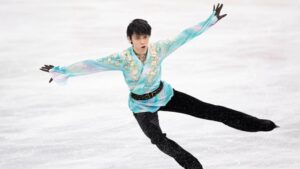
How did you like the figure skating glossary?
Figure skaters don’t just skate on the rink, they also use their skillful expressiveness.
He will put on a performance that will greatly entertain the viewers.
Figure skating is also a sport with a long history and tradition.
It is an internationally popular sport.
The terms introduced in this figure skating glossary
I hope your figure skating passion increases.
